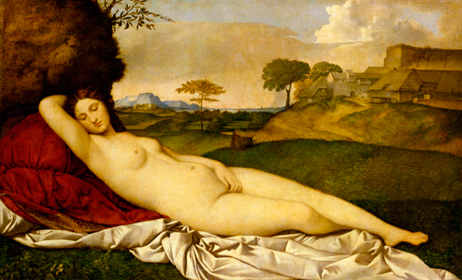| Giorgione Sleeping Venus 1508/10 Gemäldegalerie Alte Meister Dresden, Germany |
|
Rights (Photo / Work):
CC0 // Wikipedia List of sources: |
During the Renaissance the ideal of the ancient times was resumed. Ancient female sculptures covered the sexual organ either by means of garment or with one hand. If the woman was naked, the artists depicted a depilated vulva triangle. Most of the Italian painters adopted these ideals, like in the case of the Venus. Her organ is hairless and can be interpreted as an "exaggeration of the ideal"[1]. However, this and other Italian equivalents are supposed to depict a pudental cleft[2]. The reason for the missing female organ has not been justified. Is it in order to contain female sexuality, that is, to "seal the female body"[3] like Linda Nead[4] assumes? Or is it rather the fear of female seduction that the church tried to warn the people of? Are aesthetic reasons responsible for it? German and Dutch painters aimed for a lifelike representation of women in their works. This is why Dürer, Grien and Cranach among others painted the pubic hair as well. Biography: http://de.wikipedia.org/wiki/Giorgione (Translation: C. Wilhelm) |



